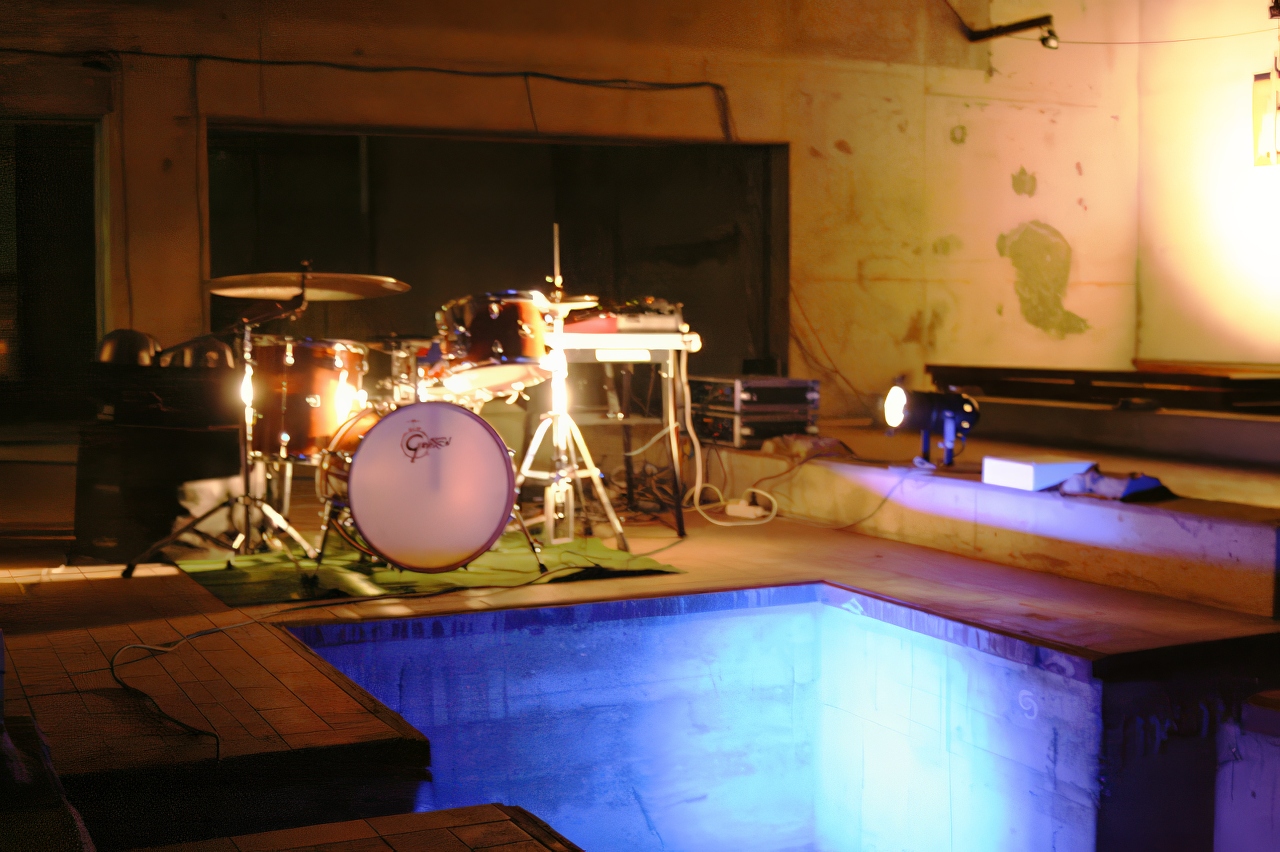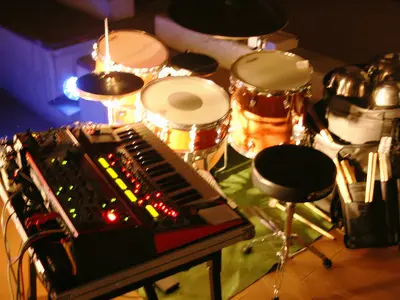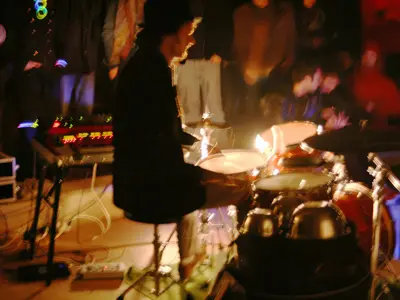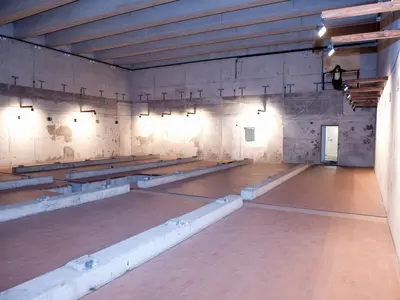Public Static Void is a 5-channel audio composition I made as part of the course Electroacoustic Music: Origins – Technology – Aesthetics held by Kees Tazelaar in the Edgard Varèse guest professorship at the Electronic Studio at Technische Universität Berlin. The creation techniques and aesthetics of the piece relate to the early experiments in Dutch electronic music studios in the 1950s, where sine waves recorded on tape loops were used as sound sources and synchronized incrementally to create dense textures. I combined this technique with the recreation of a live drumming performance I did in the same months inside a giant 300 square meter cooling chamber of a malthouse factory in Berlin. The room was captured using impulse responses and later recreated by distributing the artificial reverberation on the channels. The piece was first played at the next_generation 5.0 Festival at ZKM Karlsruhe.
Structure of the piece –
The piece is structured into five sections, each lasting approximately one minute and separated by an electronic gong sound.
- Section 1 introduces the sine wave synchronization technique, panning the waveforms around the multichannel system to create an immersive experience.
- Section 2 adds rhythmic content that is placed across the room using a randomization technique, creating complex acoustic positioning.
- Section 3 marks the start of the drumming performance, with percussion playing into the reverbarating room. A microphone is picking up individual hits and sending them into the speakers, creating a strong contrast between reverbarated room and the dry recordings, which were synchronized, chopped and reversed as part of the production.
- Section 4 brings back the sine waves at higher frequencies by altering the playback speed.
- The final section 5 continues the improvisation on drums, where the recorded material is played back time synchronized across the room speakers, weaving the overlapping takes into a complex rhythmic piece.



